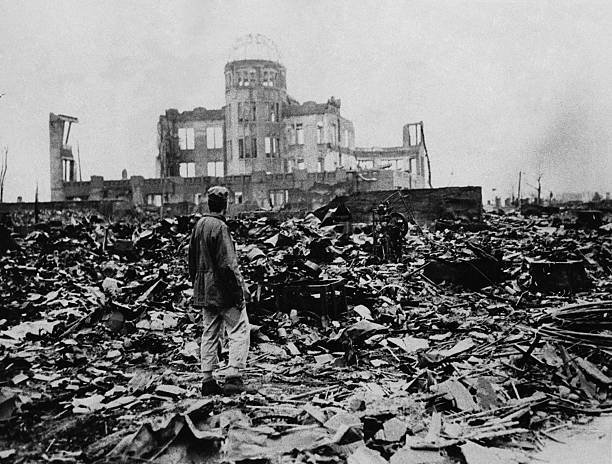The Prelude to Devastation
On August 6, 1945, the world witnessed a moment that would forever alter the course of history. The United States dropped the first atomic bomb, codenamed “Little Boy,” on the city of Hiroshima, Japan. This marked the beginning of the nuclear age and introduced humanity to the catastrophic power of atomic energy.
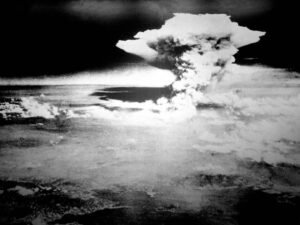 >
>The Decision over Hiroshima
The decision to drop the bomb was made in the final stages of World War II. President Harry S. Truman authorized its use in an effort to bring a swift end to the war with Japan. The hope was to avoid a prolonged conflict and further loss of life. However, this decision remains one of the most controversial in military history, debated for its ethical implications and necessity.
The Bombing and Immediate Aftermath
At 8:15 AM on August 6, 1945, the bomb exploded approximately 600 meters above the city, unleashing an unprecedented force. The immediate impact was catastrophic:
- Blast Radius: The explosion flattened buildings within a 1.5-mile radius.
- Temperature: The temperature at the epicenter reached an estimated 7,000 degrees Fahrenheit, vaporizing everything in its immediate vicinity.
- Radiation: The explosion released deadly radiation, causing severe burns and radiation sickness among the survivors.
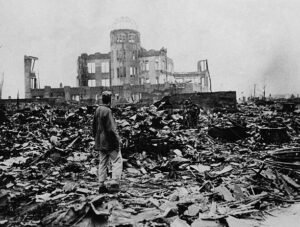 >
>The Human Toll
The human cost of the bombing was staggering:
- Immediate Deaths: An estimated 70,000 to 80,000 people died instantly.
- Injuries: Tens of thousands suffered severe injuries, burns, and radiation sickness.
- Long-Term Effects: Over the following months and years, thousands more succumbed to radiation-induced illnesses and cancers.
The City’s Destruction
Hiroshima, a thriving city before the bombing, was reduced to rubble. Vital infrastructure, including hospitals, schools, and homes, was obliterated. The once-bustling streets were now filled with debris and the haunting remains of what once was.
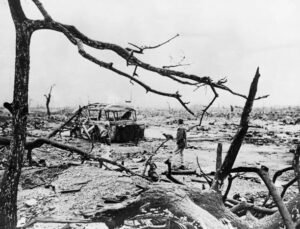 >
>Resilience and Rebuilding
Despite the overwhelming devastation, Hiroshima’s story is one of incredible resilience:
- Reconstruction: The Japanese government and international community rallied to rebuild the city. By the 1950s, Hiroshima had begun to rise from the ashes.
- Peace Memorials: The Hiroshima Peace Memorial Park and the Atomic Bomb Dome stand as solemn reminders of the past and symbols of hope for a nuclear-free world.
- Education and Advocacy: Survivors, known as Hibakusha, have played a crucial role in advocating for nuclear disarmament and educating future generations about the horrors of nuclear warfare.
Hiroshima Today
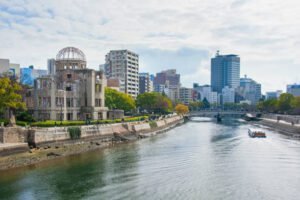 >
>Today, Hiroshima is a vibrant, modern city, a testament to the resilience and determination of its people. The city’s transformation from a symbol of destruction to a beacon of peace and progress is nothing short of remarkable:
- Economic Growth: Hiroshima has become a hub for industry and innovation, with a thriving economy.
- Cultural Significance: The city is known for its rich cultural heritage, including the historic Hiroshima Castle and Shukkeien Garden.
- Global Peace Symbol: Hiroshima hosts numerous international events and conferences focused on peace and disarmament, reinforcing its commitment to a world without nuclear weapons.
The Legacy and Lessons
The bombing of Hiroshima left an indelible mark on human history. It serves as a powerful reminder of the destructive potential of nuclear weapons and the urgent need for global disarmament. The resilience of Hiroshima’s people offers hope and inspiration, showing that even in the face of unimaginable adversity, humanity can rebuild and strive for a better future.
Conclusion
The story of Hiroshima is one of profound tragedy and remarkable recovery. As we reflect on the events of August 6, 1945, let us honor the memory of those who perished, celebrate the resilience of the survivors, and commit ourselves to ensuring that such devastation is never repeated. Hiroshima stands as a powerful symbol of peace, a testament to the human spirit’s capacity to overcome, rebuild, and hope for a brighter tomorrow.
